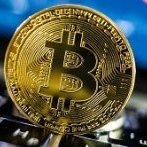
Bitcoin was built using the C ++ programming language
By
SuperCrypto, in Bitcoin
-
Recently Browsing 0 members
No registered users viewing this page.
-
Topics
-
Сообщения
-
By CoinClick.cc · Posted
Стивен Нерайофф в треде из твитов постарался объяснить, что сеть Эфириума была централизованной с момента создания, поэтому ETH можно назвать инвестиционным контрактом. Сооснователь Эфириума Джозеф Любин (Joseph Lubin) совершал спекулятивные покупки в ходе проведения ICO, купив 9,5% монет, настаивает бывший участник проекта. Недавно его компания Consensys направила иск против регулятора, требуя помешать контролировать эфир как ценную бумагу. Стивен утверждает, что Любин провел встречу с бывшим сотрудником SEC Биллом Хинманом непосредственно перед знаменитой речью 2018 года о статусе эфира. В ходе выступления чиновник объявил, что эфир не является ценной бумагой. Бывший участник команды Ethereum уверен: скоординированные усилия сооснователей Эфириума были направлены на сокрытие истинной централизованной природы сети, что противоречит их заявлениям о децентрализации проекта. источник:https://ru.investing.com/news/cryptocurrency-news/article-2407869 ——————————————————— ОБМЕНЯТЬ / ПОМОЩЬ / БОНУСЫ / ОТЗЫВЫ Стивен Нерайофф в треде из твитов постарался объяснить, что сеть Эфириума была централизованной с момента создания, поэтому ETH можно назвать инвестиционным контрактом. Сооснователь Эфириума Джозеф Любин (Joseph Lubin) совершал спекулятивные покупки в ходе проведения ICO, купив 9,5% монет, настаивает бывший участник проекта. Недавно его компания Consensys направила иск против регулятора, требуя помешать контролировать эфир как ценную бумагу. Стивен утверждает, что Любин провел встречу с бывшим сотрудником SEC Биллом Хинманом непосредственно перед знаменитой речью 2018 года о статусе эфира. В ходе выступления чиновник объявил, что эфир не является ценной бумагой. Бывший участник команды Ethereum уверен: скоординированные усилия сооснователей Эфириума были направлены на сокрытие истинной централизованной природы сети, что противоречит их заявлениям о децентрализации проекта. источник:https://ru.investing.com/news/cryptocurrency-news/article-2407869 -
Наш обменник добавлен в мониторинг Wellcrypto.io будем рады долгому и взаимовыгодному сотрудничеству. https://wellcrypto.io/ru/exchangers/aztor/
-
Мы рады объявить, что поддерживаем PENDLE на нашей платформе! Pendle - это криптовалюта, позволяющая пользователям торговать токенизированным будущим доходом в сетях Ethereum и Avalanche. Она предлагает новый финансовый инструмент, разделяя доход от владения основным активом, что увеличивает гибкость и спекулятивные возможности в DeFi. Обменивайте PENDLE по лучшим курсам на: easybit.com/ru 👈
-
We are excited to announce that we support PENDLE on our platform! Pendle is a cryptocurrency that allows users to trade tokenized future yield on Ethereum and Avalanche networks. It offers a novel financial primitive by enabling the separation of yield from the ownership of the underlying asset, enhancing flexibility and speculative opportunities in DeFi. Exchange PENDLE at the best rates at: easybit.com 👈
-
📢Now all SpaceXpanse communication channels 📲 are updated according to the new roadmap info! 🥳 So brace yourselves for some high G's coming your way pretty soon.. 🚀🤩
-
FinchPay is a crypto on-ramp and off-ramp service, which lets users purchase and sell cryptocurrencies with fiat currencies. Users can choose between the following payment methods: Visa and MasterCard bank card and multiple alternative payment methods for different GEOs. The list of crypto assets for purchase and sale is always expanding, and now we support all main cryptocurrencies, such as BTC, ETH, USDT etc. FinchPay provides full disclosure on the exchange rates and the service fee, making the terms of transactions fully transparent. FinchPay is a flagship product by Vilnius-based UAB Finch Technologies. The company is registered as a Virtual Asset Service Provider in accordance with Lithuanian and EU regulations. The customer registration and AML/KYC verification is a one-time procedure which only takes a few minutes. The global FinchPay platform is available in more than 100 countries. For business clients, FinchPay offers B2B and B2B2C solutions and provides their partners with API for integration of their gateway into various crypto and financial products. 24/7 customer support service and refined transaction flow ensure optimal user experience even for first-timers. Both retail and corporate clients will enjoy the reliability, convenience, and simplicity of FinchPay. Customers about us Trustpilot: https://uk.trustpilot.com/review/finchpay.io How to reach us? FinchPay official website: https://finchpay.io Telegram: @finchpay_sales Email: sales@finchpay.io LinkedIn: https://www.linkedin.com/company/finchpay/
-
By Stan NordFX · Posted
Forex and Cryptocurrency Forecast for April 29 - May 3, 2024 EUR/USD: Inflation Persists, US GDP Growth Slows The US economy remains the most powerful on the planet. Moreover, its share of global GDP has reached a nearly two-decade high of 26.3%. According to the IMF, from 2018, the European Union's share decreased by 1.4%, Japan's by 2.1%, while the United States increased by 2.3%. China's GDP is 64% of the American figure, down from 67% five years ago. As a result, the dollar remains the undisputed leader among G10 currencies, with no contenders for its throne in the foreseeable future. The strength of the national economy, coupled with a robust labour market, allows the Federal Reserve to focus on combating inflation, aiming to reduce it to the target 2.0%. According to Jerome Powell, head of the US Central Bank, easing monetary policy under current conditions would have far more negative consequences for the economy than maintaining it tight over a long period. Against this backdrop, the likelihood of a dollar interest rate cut at the Fed's June meeting, according to the FedWatch Tool, fell to 15%. Market participants believe that, at best, a decision to change the current policy may be taken in September. Some economists, including analysts from Morgan Stanley and Societe Generale, even suggest that the Fed may delay the first rate cut until early 2025. Such forecasts led to the US currency rising to five-month highs in mid-April against the euro, British pound, Australian, and New Zealand dollars, with USD/JPY once again reaching a 34-year price record and the DXY index climbing to 106.42. However, that was in mid-April. For the last ten days of the month, the DXY was under bearish pressure, pushing EUR/USD upward. Jerome Powell stated that decisions on rate cuts are not made in advance but depend entirely on macroeconomic statistics. The statistics released in the last few days looked ambiguous, causing doubts that the US economy could maintain its previous positive dynamics. Tuesday's statistics on April 23, regarding US business activity and core durable goods orders, disappointed investors. Preliminary data from S&P Global showed that the Business Activity Index (PMI) in the US services sector unexpectedly fell from 51.7 to 50.9 points. The manufacturing sector's indicators were even worse, where the PMI crossed the threshold, separating progress from regression. In April, this indicator fell from 51.9 to 49.9 (forecast 52.0). These data alone are not as significant as labor market or inflation reports, but two days later, on April 25, they were supplemented by equally disappointing US GDP data. The preliminary estimate showed that US economic growth in Q1 was only 1.6%, lower than the forecast 2.5% and previous 3.4%. Compared to the same quarter in 2023, GDP growth decreased from 3.1% to 3.0%. Against this backdrop, the DXY, and with it EUR/USD, underwent a correction, with the pair rising to 1.0752. It should be recalled that the US inflation data released on April 10 showed that the Consumer Price Index (CPI) reached 3.5% year-on-year, the highest in six months. On Friday, April 26, the Bureau of Economic Analysis reported that inflation measured by the change in the Personal Consumption Expenditures (PCE) Price Index in March rose to 2.7% (year-on-year). The core PCE, which excludes volatile food and energy prices, instead of the expected decrease to 2.6%, remained at the previous level of 2.8%. Thus, on the one hand, we see that inflation is resistant and does not want to go down, and on the other hand, we observe a slowdown in GDP growth. According to our forecasts, faced with such a crossroads, the Fed will still not deviate from its previous path and will choose to fight price growth. Moreover, the decrease in GDP in Q1 should not overly alarm the regulator, as the US economy had been expanding at 2% and more for seven consecutive quarters, despite the aggressively tight monetary policy of the Fed. Moreover, recent labor market data looks very positive. The number of initial unemployment claims decreased from 212K to 207K (forecast 214K) – a minimum since February. On Tuesday, April 23, the same day as in the US, preliminary data on business activity came out from the other side of the Atlantic. In Germany, the Manufacturing PMI rose from 41.9 to 42.2, and in the services sector – from 50.1 to 53.3, the Composite Index – from 47.7 to 50.5. Regarding the Eurozone as a whole, a positive dynamic was also noted. Thus, the Business Activity Index in the services sector rose from 51.5 to 52.9 points, the Composite Index from 50.3 to 51.4. The exception was the Manufacturing PMI (a decrease from 46.1 to 45.6). As for forecasts about the start of easing monetary policy by the European Central Bank, the emphasis is still on June. This was once again confirmed by the president of the German Bundesbank and a member of the ECB's Governing Council, Joachim Nagel, who stated on April 24 that a rate cut in June does not necessarily imply a series of rate cuts. In other words, in June – yes, there will be a cut, what happens next – is still unknown. All of the above indicates that the fundamental indicators are still on the side of the dollar. The EUR/USD correction is likely to be limited and will not be powerful or prolonged. Last week, the pair closed at 1.0692. According to economists from the Singapore-based United Overseas Bank, it is unlikely to have the strength to break through the resistance at 1.0765. As for the forecast for the near future, as of the evening of April 26, 50% of experts expect the dollar to strengthen, 35% – its weakening, the remaining 15% maintained neutrality. Among the trend indicators on D1, 65% are on the side of the bears, 35% – are coloured green. Among the oscillators, a third are on the side of the bears, a third – on the side of the greens, and a third – are painted in neutral gray. The nearest support for the pair is located in the zone of 1.0680, then 1.0600-1.0620, 1.0560, 1.0495-1.0515, 1.0450, 1.0375, 1.0255, 1.0130, 1.0000. Resistance zones are located in the areas of 1.0710-1.0725, 1.0740-1.0750, 1.0795-1.0805, 1.0865, 1.0895-1.0925, 1.0965-1.0980, 1.1015, 1.1050, 1.1100-1.1140. The coming week promises to be quite turbulent and volatile as it is filled with various important events. On Monday, April 29, preliminary data on consumer inflation (CPI) in Germany will be released. The next day, another batch of German statistics will be released, including GDP and retail sales figures. On the same day, we will learn the preliminary volume of GDP and the level of inflation in the Eurozone as a whole. On Wednesday, May 1, Germany and many other EU countries will have a holiday – Labor Day. However, the United States will continue to work on this day. First, the ADP report on employment levels in the private sector of the country and indicators of business activity in the manufacturing sector will be published. The most important event will undoubtedly be the meeting of the FOMC (Federal Open Market Committee) of the US Federal Reserve on Wednesday, May 1, and the subsequent press conference of the management of this regulator. In addition, on Friday, May 3, we traditionally await another batch of very important statistics from the American labor market, including the unemployment rate and the number of new jobs created outside the agricultural sector (NFP), as well as revised data on business activity (PMI) in the US services sector. GBP/USD: US PCE Hindered the Strengthening of the Pound The preliminary statistics on business activity in the United Kingdom released on Tuesday, April 23, were mixed. The PMI in the manufacturing sector of the country crossed from above to below the growth/fall boundary, and with a forecast and previous value of 50.3 points, it actually fell to 48.7. In the UK services sector, on the other hand, there was growth in April – the indicator rose from 53.1 to 54.9 (market expectations 53.0). As a result, the Composite PMI reached 54.0 (52.8 a month earlier). However, all these figures did not attract much attention from investors. On April 22, GBP/USD fell to 1.2300. The bulls on the pair took advantage of the dollar's overbought condition to return it to the lower boundary of the medium-term corridor of 1.2500-1.2800 in which it had been moving since the end of November last year. However, they did not have enough strength to consolidate within the corridor. The two-week maximum was recorded at 1.2540, after which, pushed by US PCE, the pair went down again and ended the five-day period at 1.2492. According to specialists from United Overseas Bank, as long as the support at 1.2420 is not broken, there is still a possibility of the pound breaking through the 1.2530 mark. The next resistance, according to them, is at 1.2580. The median forecast of analysts regarding the behaviour of GBP/USD in the near future looks maximally uncertain: 20% voted for the movement of the pair to the south, the same amount – to the north, and the majority (60%) simply shrugged their shoulders. As for technical analysis, the trend indicators on D1 point south 65% and 35% look north. Among the oscillators, the picture is mixed: 25% recommend selling, 25% – buying, and 50% are in the neutral zone. In case of further decline of the pair, it will encounter support levels and zones at 1.2450, 1.2400-1.2420, 1.2300-1.2330, 1.2185-1.2210, 1.2110, 1.2035-1.2070, 1.1960, and 1.1840. In case of growth, the pair will encounter resistance at levels 1.2530-1.2540, 1.2575-1.2610, 1.2695-1.2710, 1.2755-1.2775, 1.2800-1.2820, 1.2885-1.2900. No significant statistics on the state of the UK economy are planned for the week. USD/JPY: Reached the Moon, Next Target – Mars? We called the previous review "Higher and Higher". Now, it is worth asking at what altitude will this flight into space end? When will the Bank of Japan (BoJ) finally decide on a radical change in its monetary policy? At the meeting on April 26, the members of the Japanese Central Bank unanimously decided to keep the key interest rate at the previous level of 0.0-0.1%. Moreover, the regulator removed from the statement the reference that it is currently buying JGB bonds for about 6 trillion yen per month. The statement after the meeting states that "the prospects for the development of the economy and prices in Japan are extremely uncertain," "if inflation rises, the Bank of Japan will likely change the degree of easing of monetary policy," however, "it is expected that the eased monetary policy will be maintained for some time." The market predictably reacted to such decisions of the Japanese Central Bank with another Japanese candle on the chart of the USD/JPY pair. The maximum was recorded at 158.35, which corresponds to the peak values of 1990. There were no currency interventions to save the national currency, which many market participants feared. Recall that strategists from the Dutch Rabobank called the level of 155.00 critical for the start of such interventions by the Ministry of Finance of Japan. The same mark was called by 16 out of 21 economists surveyed by Reuters. The rest predicted such actions at levels of 156.00 (2 respondents), 157.00 (1), and 158.00 (2). USD/JPY has long exceeded the levels at which the intervention took place in October 2022 and where the market turned around about a year later. It now seems that 158.00 is not the limit. Perhaps it is worth raising the forecast bar to 160.00? Or immediately to 200.00? USD/JPY ended the past week at 158.32. The forecast of analysts regarding the near future of the pair looks as follows: fear of currency interventions still prevails over 60% of them, while the remaining 40% are waiting for the continuation of the flight to Mars. Technical analysis tools clearly have no concerns about interventions. Therefore, all 100% of trend indicators and oscillators on D1 point north, although a third of the latter are in the overbought zone. The nearest support level is located in the area of 156.25, then 153.90-154.30, 153.10, 151.00, 149.70-150.00, 148.40, 147.30-147.60, 146.50. And it is practically impossible to determine resistance levels. We only note the reversal maximum of April 1990, 160.30, although this target is quite conditional. No significant events regarding the state of the Japanese economy are expected in the coming week. Moreover, traders should keep in mind that Monday and Friday in Japan are holidays: April 29, the country celebrates the birthday of Hirohito (Emperor Showa), May 3 – Constitution Day. CRYPTOCURRENCIES: Where Will Bitcoin Fall? As expected, the fourth halving took place in the bitcoin network at block #840000 on April 20. The reward for finding a block was reduced from 6.25 BTC to 3.125 BTC. Recall that halving is a halving of the reward size for miners for adding a new block to the bitcoin blockchain. This event is embedded in the code of the first cryptocurrency and occurs every 210,000 blocks – until the moment when the mining of 21 million coins (presumably in 2040) ends the emission of cryptocurrency. It should be noted that the fourth halving will provide for the mining of approximately 95% of the entire bitcoin emission, about 99% of all coins will be mined by 2033-2036. Then, the emission will gradually move towards zero. In the previous review, we promised to tell how the market would react to this important event. We promised – we report: the market reaction is close to zero. For several days after the halving, there was no growth in volatility. The price of bitcoin slowly and lazily moved first upward, reaching $67,269 on April 23, and then returned to where it began its weekly journey: to the $64,000 zone. It seems that market participants froze in anticipation of who would be the first to start buying or, conversely, selling the main cryptocurrency massively. According to experts from Bitfinex, the post-halving supply restriction stabilizes the price of the first cryptocurrency and may contribute to its growth. "The reduction in the pace of bitcoin issuance after halving, which will amount to $30-40 million per day, contrasts sharply with the daily net inflow of $150 million into spot ETFs. This emphasizes a significant demand and supply imbalance, which may contribute to further price growth," stated the Bitfinex report. However, analysts from QCP Capital believe that bitcoin optimists will have to wait at least two months before assessing the effect of the past fourth halving. "The spot price grew exponentially only 50-100 days after each of the three previous halvings. If this pattern repeats this time, bitcoin bulls still have weeks to create a larger long position," their report stated. Anthony Pompliano, the founder of the venture company Pomp Investments, believes that within 12-18 months, the coin is expected to grow to $100,000, with chances of reaching $150,000-200,000. However, before moving to a bull rally, BTC/USD, in his opinion, is waiting for a correction down. At the same time, Pompliano believes that the price will not fall below $50,000. "I think we have already crossed this Rubicon," – he wrote. The possible upcoming decline of the main cryptocurrency is probably a topic currently much more discussed than its subsequent growth. Many agree that bitcoin coins will appreciate in the long term. But how will quotes behave in the more foreseeable future? Fidelity Digital Assets, the leading issuer of one of the spot BTC ETFs, has already revised its medium-term forecast for bitcoin from positive to neutral. The reason for abandoning optimistic sentiments is several worrying trends in the crypto market. Fidelity analysts noted the growing interest in selling from long-term hodlers. Among them, there is currently a large percentage of profitable addresses, as noted in the company's report. This means that holders may want to lock in profits and start selling BTC. On the other hand, on-chain data indicates that small investors, on the contrary, continue to accumulate the first cryptocurrency. Since the beginning of the year, the number of addresses on which BTC is stored for at least $1,000 has increased by 20% and reached a new historical maximum. "Such a trend may indicate the growing dissemination of bitcoin and its acceptance among 'average' users," – Fidelity noted. Specialists from CryptoQuant examined the SOPR indicator readings for these categories of investors and made conclusions similar to those of their colleagues from Fidelity. Investments in Bitcoin by "new" whales (owners of coins "aged" less than 155 days) almost doubled the indicator of "old" large players (more than 155 days). At the same time, the increased value of the metric showed that the profits of the "old" hodlers significantly exceed the indicators of the "newcomers". And if the "old-timers" move to fix profits, this may lead to the formation of price peaks. An analysis of the current picture, according to CEO of CryptoQuant Ki Young Ju, also speaks of the need to exercise caution in anticipation of possible corrections and increased volatility. Recall that earlier, specialists from JPMorgan noted that digital gold is in a state of overbought. And co-founder of CMCC Crest Willy Woo noted that if the price of the first cryptocurrency falls below the support level of short-term holders at $58,900, the market risks moving into a bearish phase. As of the evening of Friday, April 26, the BTC/USD pair is trading in the region of $63,950. The total capitalization of the crypto market is $2.36 trillion ($2.32 trillion a week ago). The Bitcoin Fear & Greed Index remained in the Greed zone, although it rose from 66 to 70 points. Finally, in conclusion of the review, our long-forgotten crypto-life-hacks column. It turns out that in order to become a crypto millionaire, it is enough to have a marker and a piece of paper. The possibility of such a way of enrichment was proven by Christian Langlois, also known as Bitcoin Sign Guy. This guy made headlines in many news outlets after showing a notebook sheet with the inscription "Buy Bitcoin" behind the back of the Chair of the Federal Reserve System Janet Yellen. At that moment, the head of the Fed was giving testimony about the state of the US economy. This image instantly spread across the network and became one of the symbols of the emerging crypto industry. For his misdemeanour, the 22-year-old intern Langlois was disgracefully expelled from the hearings. But after this episode was shown on television, enthusiasts sent 7 BTC to his crypto wallet to thank the guy for his bold move. Four years ago, Christian sold 21 copies of the "cult" sheet at an average price of 0.8 BTC, earning another 16.8 BTC. Thus, his total earnings reached 23.8 BTC, which is more than $1.5 million at the current exchange rate. And a few weeks ago, Langlois was offered another 5 bitcoins for the original, but he refused to sell the sheet. Nevertheless, Christian liked the idea of further monetizing the self-created object of "artistic and historical heritage", and he decided to sell it at an auction, directing the proceeds to finance his startup Tirrel Corp. On April 25, 2024, the auction house Scarce.City reported that the lot, which became a popular meme, was sold for 16 BTC (more than $1 million). NordFX Analytical Group Notice: These materials are not investment recommendations or guidelines for working in financial markets and are intended for informational purposes only. Trading in financial markets is risky and can result in a complete loss of deposited funds. #eurusd #gbpusd #usdjpy #btcusd #ethusd #ltcusd #xrpusd #forex #forex_example #signals #cryptocurrencies #bitcoin #stock_market https://nordfx.com/ -
By Bitkovskiy · Posted
С радостью сообщаем, что мы добавлены на мониторинг OKchanger Контакты: Наш сайт - https://bitkovskiy.io/ Почта - bitkovskiy.change@gmail.com Telegram - https://t.me/Bitkovskiy_exchange -
там автоматом, вроде, должно. при соблюдении нужных пунктов. что-то типа этого: а еще у них есть пулы: а ля американские горки вверх-вниз?
-
В России планируют запретить оборот криптовалют — депутаты назвали точную дату Исключение авторы проекта предлагают сделать для майнеров, участников майнинг-пулов и «проектов Банка России в рамках экспериментального правового режима». Участниками обращения криптовалют считаются российские или иностранные юрлица и их представительства, а также физические лица, находящиеся на территории страны не менее 183 суток в течение 12 следующих подряд месяцев (то есть полноценные российские налоговые резиденты). Законопроект предлагает запретить на территории страны любую рекламу самих криптовалют и рекламу организации обращения виртуальных монет. Сейчас в действующем законодательстве есть запрет на расчеты между физическими и/или юридическими лицами в криптовалютах, но нет запрета на «организацию обращения» в любом виде. Это обновленная редакция законопроекта № 237585-8, который появился в ноябре 2022 года и должен был отрегулировать майнинг. Тогда документ не прошел даже перовое чтение. В феврале 2024 года авторы законопроекта снова попытались дать ему ход, но 19 апреля комитет по финансовому рынку постановил отправить текст на доработку. В пятницу, 26 апреля, вечером новая версия появилась на столе у председателя Госдумы Вячеслава Володина. Авторами и прошлой, и новой версии законопроекта значится группа из 16 депутатов, в том числе достаточно статусных: председатель комитета по финансовому рынку Анатолий Аксаков, зампредседателя комитета Аркадий Свистунов, зампредседателя комитета по информационной политике Антон Горелкин, первый зампредседателя комитета по безопасности Андрей Луговой, бывший министр сельского хозяйства Алексей Гордеев и так далее. В начале апреля главный фронтмен законопроекта, Анатолий Аксаков, жаловался, что принять закон мешает «одно-единственное ведомство». И обещал, что проект точно станет законом в августе.
-







